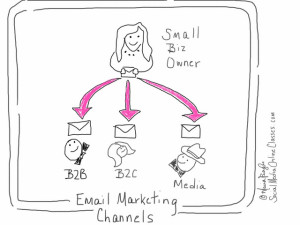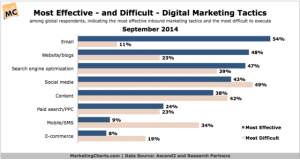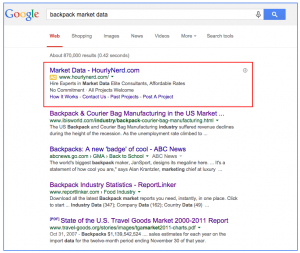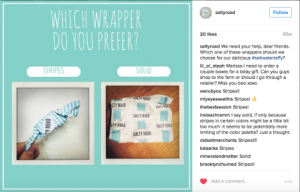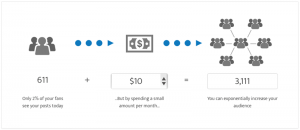Past vs New Customers

Past vs New Product & Services

The first thing I want to see is if you’ve established a base of sales, things that you do on a regular basis that are kind of like the foundation of your business. There are only three ways to really grow sales:
- Sell more to your current customers.
- Sell more to new customers.
- Raise your prices.
We talked about the pricing models last time, about the difference between the Walmart pricing and the Nordstrom pricing. What do you offer that’s over and above what your customers are expecting, and more importantly, what your competition is delivering?
Benefits vs Features

What happens a lot is this: when people are trying to sell new products, they tend to focus on features and benefits. Where most people make a mistake is they tend to focus more on the features and less of the benefits. Let me give you an example. We had a refrigerator that died that was 18 years old. Now, I needed to research and figure out where I wanted to go for a new one. Well, I went with somebody I knew, liked and trusted, because they’ve come and repaired the old fridge a few times. Now, they may not be the cheapest, but I trust them and they are gonna come and take out the old fridge, and put in the new fridge.
I called them up and their guy was so knowledgeable. He said, “You cannot order the fridge that you want because you have something called cabinet depth. With cabinet depth, here are the models that are available.” Now, we also had a bunch of features that we wanted. We wanted the pull-out drawer freezer at the bottom, but when I called up the guy from the place that we chose, he said, “Hey, I’m sorry, but in a cabinet depth refrigerator, that’s not available.” Emotionally, we wanted that feature, like, “Hey, if we’re gonna get a new fridge, let’s make it better.” But unfortunately, we couldn’t.
Emotional Connections

A lot of the time, people make decisions on what they buy based on a place of emotion, and emotion is based on benefits. People will rationalize a purchase with features. What are their needs? These are the features that we want, but the benefits are, “Hey, these people are gonna take the fridge away. They’re gonna install the new one. I don’t have to mess with any of that stuff and it’s gonna cost a whopping $60.” For $60, it’s worth it. For us, that’s what it was — the emotion of not having to deal with the stress of all the other pieces. And the best thing about selling to the benefits is that you need to get people to know, like and trust you. Once they know, like and trust you, like I did with this one company, the sale becomes a lot easier.
When it comes to emotional connections, people tend to purchase products purely for emotional reasons. Especially those that include things that they really don’t need, but want. They’re tempted to buy. For example, on social media, a lot of people will make emotional decisions to buy whatever, an Alexa, or they’ll make the decision that they want to look better, feel better, whatever that emotion is. They tend to make those decisions. If you can make them feel it upfront, if you can make them feel the way that they want to feel the way when you’re explaining your benefits, you have a leg up.
The number one way that we do that, to create that emotional connection, is telling your story. Get people to know, like and trust you first. If they feel akin to you, if they feel like they know you and they like you and maybe can trust you, they might pick up the phone and start that conversation. The next thing you want to do is share your client’s stories and their testimonials. But again, talk from a point of emotion with those. The benefits, not the features. You’re going to create more trust through those stories. And then finally, tell them how they will feel when they purchase from you. Not what their needs are, but what their emotional feelings are going to be. If you can get that across in your story and in your testimonials, you already have a leg up.
Make The Plan
So now let’s break it down to a plan. There are three pieces to this. We create a plan, we execute the plan, and we measure the plan.
Plan Out What You Want To Say
The first thing you wanna do is plan out what you want to say, how can your story make them feel something. Figure out how you can take your life experience with whatever it is that you’re selling, and transfer it to them so they can emotionally imagine themselves feeling better, feeling comfortable, sleeping better, whatever that is. What you have to do is take that and maybe break it into a series of posts. Maybe it’s step one, two, three, four and five, maybe it’s just one or two, or it could be just one. But you have to sequence it so that people go through that emotional journey with you.
Execute The Plan
The second part is you have to execute it. Create a plan for each product and service that you’re looking to increase the sales on and focus on those. Map out the content that you wanna put out there and also the conclusion. What is the decision that people make when they say, “I’m gonna buy this thing and this is how I’m going to feel after I attain it.”? And then finally, schedule those posts so that your content is laid out in a sequence that kind of guides people through that story step-by-step, and gets them to feel that connection.
Measure Results
The last piece of this is you have to go back and read your analytics. We’re gonna talk a little bit about having that home base and using analytics a little later, but it’s important to think about that. How do we measure what’s working and what’s not? Which one of those posts got the most attention? Which emotion tended to show the biggest impact on those customers or potential customers? You may not know, you can always ask people, but sometimes you just have to guess why.
Final Thoughts
Finally, how can you adjust your future posts and sequences to build upon that? In order to grow your business and increase your sales and gain new customers, you have to take them on a journey, an emotional journey of benefits that’s gonna take them from feeling hurt, tense or confused, to feeling warm and comforted and also secure. It’s your job to turn that into your story.
I would love to hear your thoughts on this. Comment below and share your thoughts, ideas or questions about showing the concepts presented. Have you had to overcome any of the presented concepts? What worked and what did not live up to expectations? Do you have any ideas or advice you could share?
Originally at business2community.com
(47)

